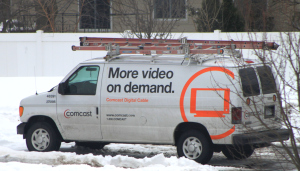 As the new year dawns we are starting to see big ISPs raise broadband prices. One of the more interesting increases is by Comcast. They increased two rates – the rate of standalone broadband and the price of renting a cable modem.
As the new year dawns we are starting to see big ISPs raise broadband prices. One of the more interesting increases is by Comcast. They increased two rates – the rate of standalone broadband and the price of renting a cable modem.
The company now charges $75 per month for a standalone broadband connection that meets the FCC’s definition of broadband of being at least 25/3 Mbps. In many of their markets the minimum speed offered to new customers is faster than this, making the $75 entry price for standalone broadband.
For now it doesn’t look like Comcast increased the cost of bundled broadband, although they just announced that all bundled packages are increasing by $5 per month. But that increase can largely be attributed to increased programming costs. The price for standalone broadband was $65 a year ago, was raised by $5 during 2017 and just went up by $5 again.
The standalone price increase is aimed squarely at cord cutters. This price punishes customers who don’t want to pay for the other services in the various Comcast bundles. This is their way to still extract a lot of margin from somebody who elects to watch video online. I wrote a blog a few months ago that cited a Wall Street analyst that suggested that the company ought to charge $90 for standalone broadband, and it looks like the company is heeding that advice.
To put that price into perspective, Google Fiber and a few others are charging $70 for a standalone symmetrical gigabit connection – 20 times the speed for a lower price. But to really make a fair comparison you also have to consider the Comcast cable modem. They just raised that rate from $10 to $11 per month. The company makes it a challenger for customers who won’t use the Comcast modem, and so the real standalone price for the minimal Comcast broadband product is $86 per month. It’s not hard to understand why households are beginning to find broadband unaffordable.
The $11 fee for a cable modem is outrageous. Comcast gets these directly manufactured and I am doubtful that they are spending more than $100 per device, and probably less. The $1 price increase adds roughly $300 million to Comcast’s bottom line. In total, the company is billing roughly $3.3 billion per year for all customers for an inventory of modems that probably costed them less than $2.5 billion. And since people tend to keep the modems for a number of years, this rate is mostly margin. Even for a new customer Comcast recovers the cost of the modem within 9 months.
Frontier also has introduced a troubling new price increase for broadband. Rather than increase the advertised price of the product they are adding a $1.99 per month ‘Internet Infrastructure Surcharge.’ This is strictly an increase in broadband rates, and the company is clearly hoping that most people don’t notice or don’t understand this new charge on their bill. For the last few years we have seen cable companies sneak in rates that look like taxes or external fees but which are just a piece of the cable TV bill. It’s disturbing to see this happening with broadband and I suspect other ISPs will begin copying this concept over the next few years.
Cox has also increased data prices, and unlike the above two companies which are trying to mask the broadband price increases, Cox raised all packages that include broadband from $2 to $4 per month.
Broadband prices have never been regulated. There was a minimal threat of price regulation under Title II authority at the FCC, but that’s now gone. I’ve seen a few articles blaming these latest price increases on the end of Title II regulation, but there has never been anything stopping an ISP from raising rates other than market forces. In fact, the FCC has never threatened to regulate broadband rates.
There are two real drivers of these and future broadband price increases. First, broadband is no longer growing explosively since most homes now have a broadband connection. And the publicly traded ISPs are feeling earnings pressure while the loss of cable TV and telephone customers leaves broadband as the only place to increase bottom line margins.
The second major factor is the absence of real broadband competition. In markets where a real competitor like Google shows up the big ISPs come close to matching the lower prices of the competitor. But as houses need faster broadband, the residual competitive pressure from DSL is waning, meaning that in most cities the cable companies are becoming a virtual monopoly. Big ISPs like Comcast will lower rates where they have a good competitor, but they are more than making up for it in markets where they have the only fast broadband.
One consequence of the kind of prices that Comcast is now charging is that, over time, they will induce more competitors to enter the market. But the only real threat on the horizon for the big cable companies is point-to-multipoint 5G. It will be interesting to see if that technology can really work as touted. If 5G is successful it will be interesting to see the pricing philosophy of the ISPs offering the service. They could price low like Google Fiber or else ride the coat strings of the cable companies with higher prices.
Share this:





